July 23, 2018 1:04 pm
Published by Cara Shepherd
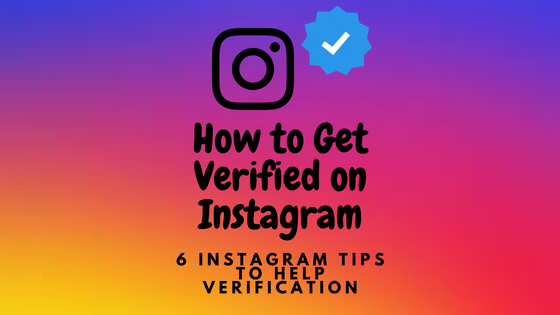
In many ways, the blue verification tick you see besides an influencer’s name is a sign of status. Only the most popular and influential Instagrammers will ever see it. In fact, it can be incredibly difficult to get verified on Instagram. Influencer Marketing Hub published an article highlighting 6 Instagram tips to help you get verified. You can view the original article here. We have summarised the article below.
Before it was symbolized status, the ‘verification’ symbol was primarily a symbol of authenticity, declaring that you are who you say you are. Verification symbols on most social media channels show people that the influencer or celebrity they are searching for are indeed authentic and not a tribute account or fake account. Instagram, however only verifies people who they deem are important enough for other people to create a tribute or fake accounts for. So, if there is no one trying to impersonate you there is no need for you to be verified.
Official Instagram statements
Instagram makes its views on verification clear in its help files. Instagram says that the verified badge means “that Instagram has confirmed that this is the authentic account for the public figure, celebrity or global brand it represents.”
Instagram also makes it clear that it is up to them to decide who qualifies as a public figure, celebrity or global brand. You cannot just apply to become verified.
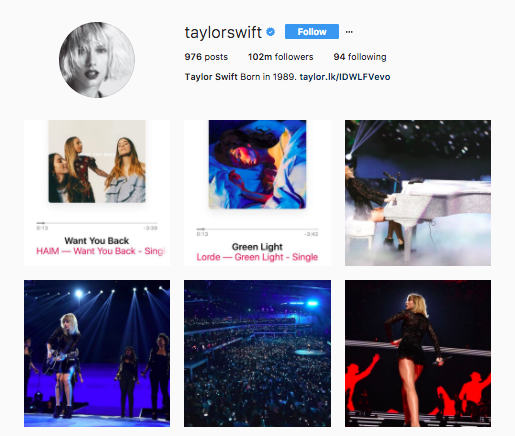
Ultimately, Instagram sums up its policy with the following statement. “Currently, only Instagram accounts that have a high likelihood of being impersonated have verified badges.” If people can find your Instagram account easily enough, then Instagram is unlikely to verify you.
Although Instagram does not see the verification symbol as a status symbol, Instagrammers who have it display it with pride and those who don’t have it often feel that Instagram has denied them “authenticity power”.
What can you do to help yourself get verified on Instagram?
If you want that little tick beside your name then you need to turn yourself into a “public figure, celebrity or global brand”. In other words, you need to become a real influencer.
Hence you should first apply the suggestions here to another social network and build an influencer status there before you use them on Instagram. If you build up a following on Instagram too quickly, before you find fame elsewhere, you may never become verified.
1. Build your followers and engagement
Clearly, the key to being famous online is to become a true influencer. You want your audience to actually engage with your posts, rather than having irrelevant followers who just boost your numbers.
An essential requirement is to define your niche. Appealing to everyone is unlikely to increase engagement. An example of this is Zoe Sugg. She built her online reputation with her personal beauty and lifestyle blog- Zoella.
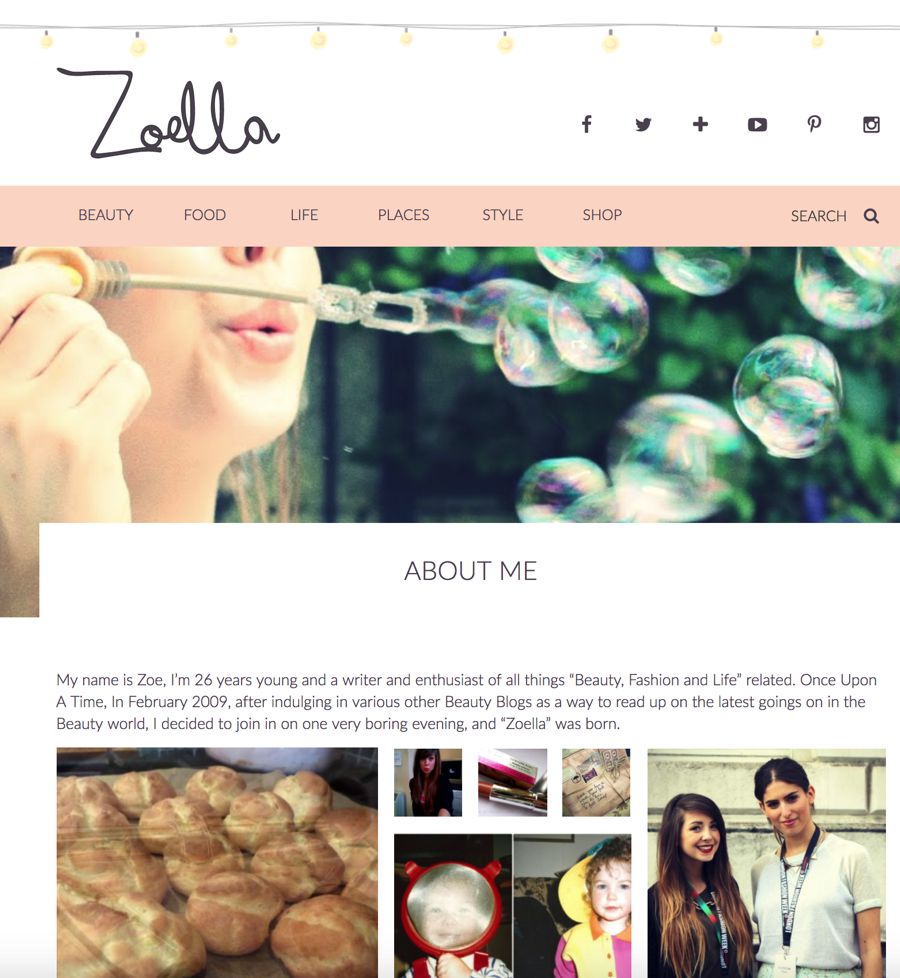
Having built her reputation on YouTube, Zoe was able to make a successful transition to other social networks, including Instagram.
Other people have opened similarly named Instagram accounts, so Instagram verified Zoe’s account to avoid confusion.
It is crucial that any engagement be meaningful. There is no point in making a series of “Nice picture”-type comments on peoples’ images/posts. Such meaningless comments do nothing to enhance your credibility as a thought leader.
2. Use popular Hashtags to help make yourself more visible
Both Instagram and Twitter suggest popular hashtags. There are also independent apps to assist with ideas, such as Hashtagify or TagBlender.
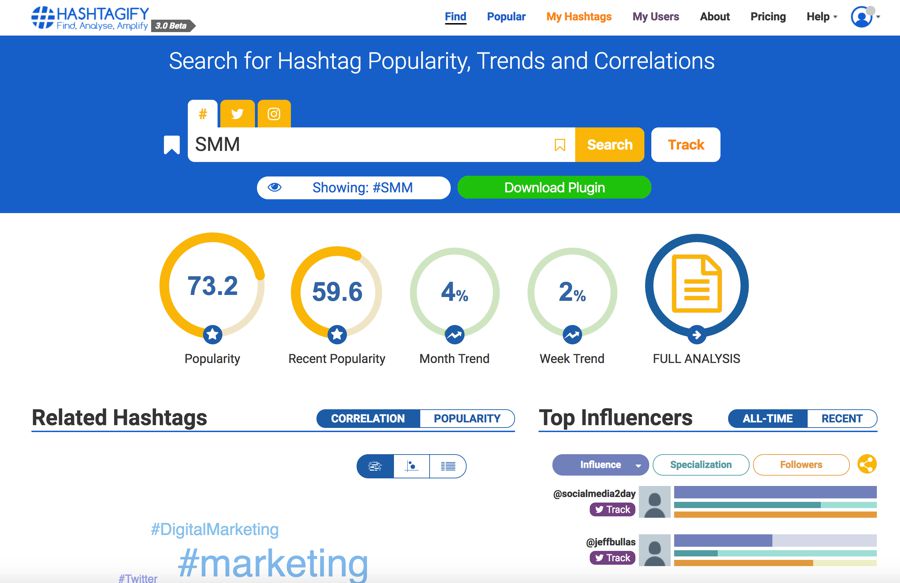
It is important that you only use hashtags that relevant to your niche. One common practice is to create a hashtag for your personal brand and to encourage your followers to use it regularly.
3. Cross promote your social media accounts
One way you can build your following on Instagram, or any other network is to promote all of your social network accounts.
By establishing popularity across a range of sites, you come across as being more of an internet celebrity, and more likely to be considered somebody worthy of Instagram verification.
4. Make your posts at the best times for your target social network
To encourage maximum engagement, you will want as many people as possible to see your posts. That means you should post at the times when most of your followers are checking their social media accounts.
CoSchedule has the following recommendations for the best time to post your Instagram images and videos to ensure ultimate engagement.
- Monday and Thursday at any time other than 3–4 p.m.
- Videos any day at 9 p.m.–8 a.m.
- Experiment with 2 a.m., 5 p.m., and Wednesday at 7 p.m.
5. Personalize your posts
You need to ensure that your account differs in some way from anyone else who might choose to use your name or something very similar. You need to add personality to your postings. If you merely post pictures of buildings or landscapes you are not adding value. Indeed you are not influential in any way. If you are a portraying yourself as a fashion influencer, there is little point in just posting pictures of clothing. You will do far better by posting a picture of people wearing the attire in attractive settings, or you modeling it.
6. Avoid Bad Social Practices
Instagram is skilled at spotting any attempts to game its system. You need to avoid taking any shortcuts as you attempt to build enough of a reputation as an influencer to gain the coveted verification tick.
If you use Instagram the way they want you to, and you build your reputation as an influencer somewhere else first, then the day may come when you open your account to find that Instagram has awarded you their verification tick.
It is hard to get verified on Instagram – but not impossible.
Share this article
May 21, 2018 1:45 pm
Published by Murray Legg
As influencer marketing continues to become a staple part of any brand’s digital media mix, we’re proud to welcome two new businesses to our Partner network in South Africa and Slovenia.
Nfinity Media in South Africa has acquired the rights to the Webfluential license in South Africa. The company will run the Webfluential business in the country and use its expertise to build the brand further. Nfinity will not just offer influencer marketing strategies and campaigns to the market, but also support growth in the influencer community, drive industry awareness and overall education about this emergent media channel. There remain a number of existing Partner agencies in South Africa that will continue to evangelise influencer marketing for their brands.
“Influencer marketing is on the rise, with more brands realising that recommendations from people are becoming more powerful than direct advertising,” says Ken Varejes, founder and CEO of Nfinity Media.

Webfluential is launching in Slovenia by the able team of AVI SPLET d.o.o. Tjaša Bogeljić, head of communications, says “V Sloveniji se veliko podjetij in agencij poslužuje influencer marketinga na napačen način – za doseg svojih ciljnih skupin izbirajo influencerje predvsem na podlagi števila sledilcev in nimajo vpogleda v tiste elemente, ki so za postavitev uspešne strategije ključnega pomena. Podjetja manualno upravljajo oglaševalske aktivnosti z influencerji kar terja veliko časa pa tudi denarja. Zato smo se odločili našemu tržišču ponuditi Webfluential, orodje, ki omogoča podjetjem izvajanje kampanj z influencerji na hiter, enostaven in predvsem učinkovit način ter jim nudi natančen vpogled v povračilo njihove naložbe.”
“In Slovenia, many marketers choose influencers primarily on the basis of the number of their followers and do not have the insights into the key elements for setting up a successful strategy to reach the right target groups. Marketers manually manage campaigns and that cost them a lot of time and money as well. That’s why we decided to offer Webfluential in our market, a platform that enables companies to manage campaigns with influencers in a quick, easy and above all efficient way that ensures much better returns.”
Webfluential is a software platform that offers brands a self-serve product for smaller campaigns and an enterprise product typically run by agencies. Accredited agencies offer highly effective campaign strategy, influencer selection, execution and reporting to their brands.

Webfluential currently has 35 Partners operating on six continents. Many global clients also utilise Webfluential to run their influencer marketing programmes. As part of an aggressive global roll-out strategy, the company is offering a select number of licenses in countries of Europe, Australia, Latin America and the US. A single franchise license for select countries is also available.
Interested parties can contact our partner team on [email protected] or find out more on the website.
Share this article
October 9, 2015 12:15 pm
Published by Kirsty Sharman
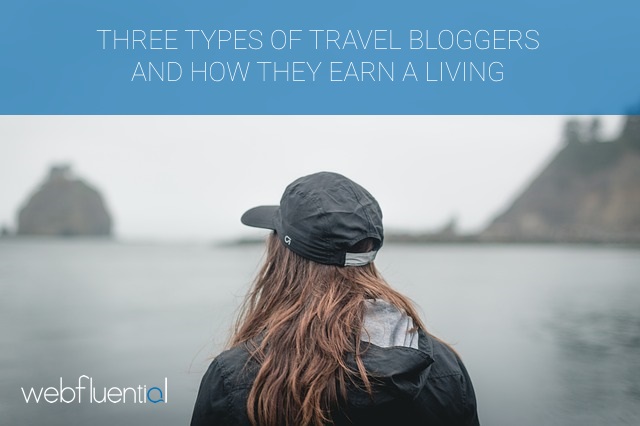
This blog post was originally written by Ruan Fourie.
As dreams go, getting paid to travel the world is up there with winning the lottery. It’s a nice daydream for a cold Monday morning, but it’s not something many of us would seriously consider. So what about those that do? Are they brave or merely foolhardy? Does the dream live up to expectations, or do they spend their whole adventure working hard and worrying about money? When it comes to ditching the rat race and traveling for a living, there are as many right answers as wrong. We take a look at three very different approaches and the travel bloggers who made them work.
Nomadic Matt: Matthew Kepnes’ story
A two-week tour of Costa Rica was Matt’s first real experience of traveling, and it was one he was keen to repeat. Tied to the standard 9-5 job, he had two weeks a year to travel the world, and he set about making good use of them. That is, until a trip to Thailand in 2005 opened his eyes and he realized he didn’t need to be rich or tied to a job to travel the world full-time.
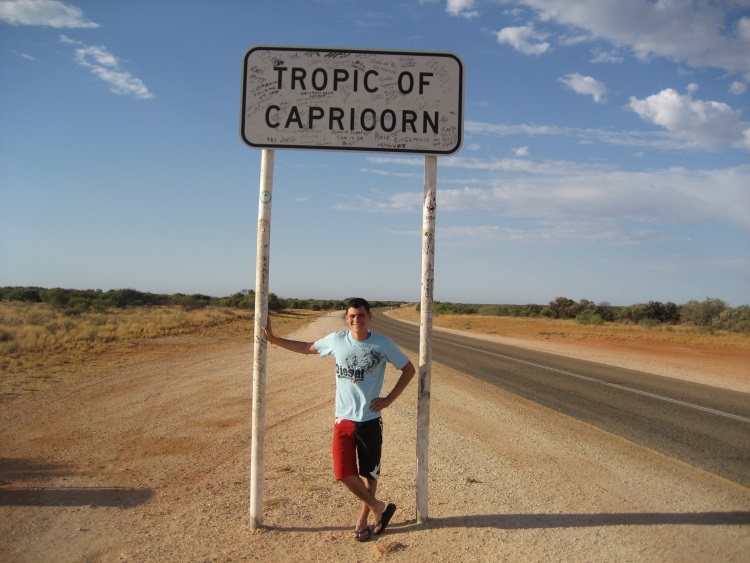
By 2006, he had completed his MBA, quit his job and was on the road again. Initially planning to be away for twelve months, Matt didn’t return to the states for a year and a half. Once he did, he quickly realized he couldn’t simply slot back into everyday life. He’d caught the travel bug and, three months after he arrived home from his first adventure, he was off again.
He’s documented his journey on his hugely successful blog, Nomadic Matt. Designed to inspire others to follow his example and travel the world on a budget, the site is one of the reasons why he can fund his lifestyle. A self-confessed workaholic, Matt put everything into building up the ‘Nomadic Matt’ brand, successfully turning his blog into a profitable business. His site is full of invaluable resources for fellow travelers, inspirational stories, posts about his travels and hints and tips on how to get the most from a similar experience. But it’s not his only source of income.
Recognizing the insight his experiences provided, Matt diversified. He produced budget city guides and books on traveling, travel blogging, teaching English – any experience he had, he wrote about.
Matt’s guides, books and blog all cross-promote each other and have helped this intrepid explorer to build an internationally recognizable brand. His site attracts over 800,000 visitors a month and has been featured on high authority news sites including CNN and The Huffington Post. His books have been phenomenally successful, ‘How to travel the world on $50 a day’ even made it onto the New York Times bestseller list. It’s an incredible achievement, and one that would not have been possible without courage, innovative thinking and dedication to the blog that started it all.
How Far From Home: Chanel and Stevo’s story
Inspired by a Jim Carey movie of the early noughties, Chanel firmly believes in the ‘Yes man’ theory – saying yes to any experience that comes her way. It’s a philosophy that led her to the blind date where she met partner Stevo, and it’s the reason why this creative couple are now six months into a year-long adventure around the world.
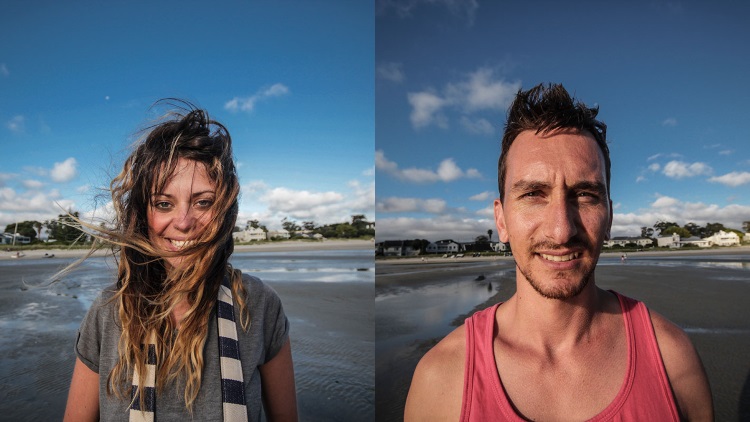
Having heard Stefan Sagmeister discuss his theory on creative sabbaticals at the 2014 Design Indaba, Chanel and Stevo knew they needed a break. They decided to say ‘yes’ to adventure and set about planning the trip of a lifetime. Both were award-winning creative professionals, and both sold nearly everything they owned to embark on this challenge, an experience they are currently documenting on their blog How Far From Home.
An experiment to see how far they can travel, both figuratively outside of their comfort zone and literally away from their native South Africa, these two have built up quite a following in a very short space of time. Their creative approach to life and the demands of living on the road is evident from their blog. Full of traveling challenges from their online community and an ever decreasing Wanderlist, their site documents their journey and provides more and more opportunities to say yes.
Unlike Nomadic Matt, with his helpful tips and travel guides, How Far From Home is less of a travel resource and more of a showcase for the creative efforts of its authors. This is a creative trip for them, and it’s as much about discovering new muses as it is exploring the world. Both have social media accounts full of artistic photos, videos, and illustrations. Stevo’s ‘Ghost Dogs’ series is captivating, and their ‘Deforestation faces’ series is truly thought provoking.
Their dedication to their traveling lifestyle and the work it inspires is impressive. Their photography and their story has been featured in international publications and has helped to garner them sponsorship from fitness app UP. They might have built a dedicated following far quicker than other travel bloggers, but even two advertising professionals can’t create a money spinning blog overnight.
Funding their trip with savings, they’re making the most of their experience and budget with sites such as Work Away. Meeting new people and helping out in the local communities, Chanel and Stevo are enjoying a truly authentic traveling experience. And they’re relying on their blog and the online community they’ve built to ensure they don’t miss out on a single challenge.
Expert Vagabond: Matthew Karsten’s story
Working two jobs in Miami and struggling to make ends meet, Matthew Karsten was inspired by his friends, both traveling on a budget, to contemplate a new way of life. He spent a year living cheaply at home to get some savings behind him, but he knew this wouldn’t be enough. So he started burning the midnight oil, working late, early and throughout the weekends trying to establish an online revenue stream, a steady income that he could rely on while he was away.

Like Nomadic Matt, Matthew published ebooks. He built a small, online business selling three how-to guides on various topics in the nightclub industry and had established a reliable income by the time he left. But his success was short-lived. His ebook business didn’t have the longevity he had expected, and he needed to find other sources of income fast. So he turned to his blog, expertvagabond.com.
With his traveling dreams reliant completely on his site, Matthew set about leveraging every available income stream. Unlike Chanel and Stevo, who’s blog is a way to document their experience, Matthew’s has always been run as a business. He sells advertising space, enters brand partnerships and uses affiliate links to make the most of his blog. He even sells his travel photography from a satellite site, using it to cross promote expertvagabond.com.
And he didn’t stop there. Having watched his initial plans fall apart with his ebook business, Matthew understands better than most the importance of diversification. He successfully developed and monetized his blog, and then used it as a jumping board, seeking freelance writing projects with other sites and publications off the back of it.
One of the most commercially minded travel bloggers out there, Matthew’s determined approach has helped him cultivate a name for himself in the travel industry. This, in turn, has led to more opportunities and means that he is one of the few travel bloggers with an agent and an established career in destination marketing. The Holy Grail for travel bloggers, destination marketing means that Matthew gets paid to visit countries all around the world. His fee includes flights, accommodation and excursions, and costs him nothing more than the time it takes to document his stay through his blog, photography and social media accounts.
Building his blog into a business didn’t happen overnight, and it took Matthew two years to monetize it. Four years later, and it’s his main source of income, although he’s the first to admit that it’s far from reliable. What it does allow him to do, however, is live life on his own terms. This is something all of our featured travel bloggers have in common, despite the fact that each of their blogs fulfills a different purpose. For Chanel and Stevo, it’s chronicling one of the most exciting experiences of their lives and showcasing the work it inspires. For Nomadic Matt, it’s an integral part of a lucrative brand. For Matthew Karsten, it’s the business that facilitates his lifestyle.
These four bloggers have succeeded in realizing a dream many wouldn’t have had the courage to attempt.They have each built a very different online business that plays to their strengths and fits easily into their lives. Whether they’ve been blogging for years like Matt or months like Chanel and Stevo, with 1000+ Twitter followers, each of these influencers can capitalize on their success.
How Webfluential helps travel bloggers fund their travels
By signing up to a respected Influencer Marketing platform, travel bloggers can effortlessly align themselves with brands that share the same vision. Like Matthew’s destination marketing (but a lot less labour intensive), they can effortlessly generate extra revenue from the social media accounts they have already invested so much time developing. All it takes is a few minutes to set up a profile. With platforms like Webfluential widely respected by international brands, bloggers simply have to accept or decline the freelance job offers that suit them. Whatever their business model, Influencer Marketing means that each travel blogger can boost their income without changing their daily routine — which is the secret to blogging your way around the world.
Share this article












